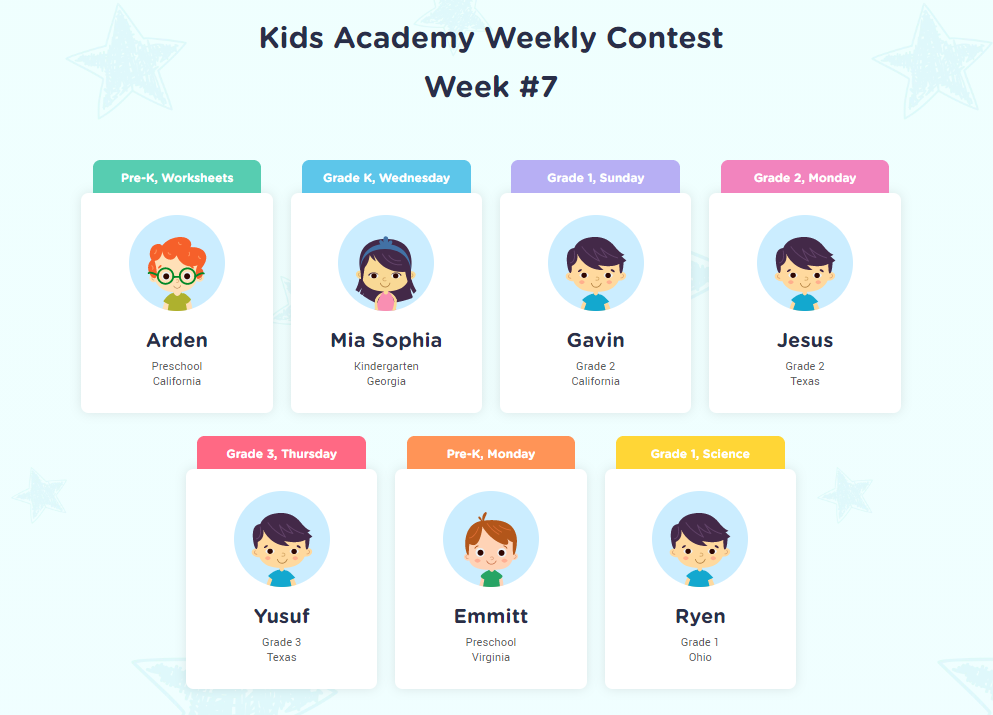Animal Classification Worksheets for Kids
10 filtered results
-
From - To
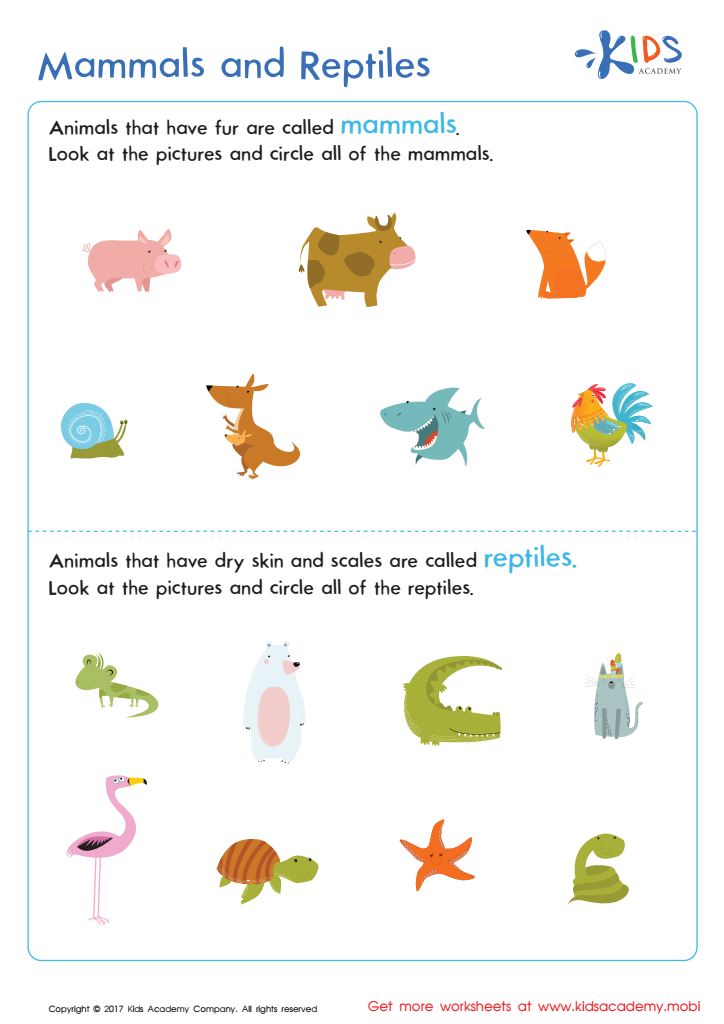

Mammals and Reptiles Worksheet
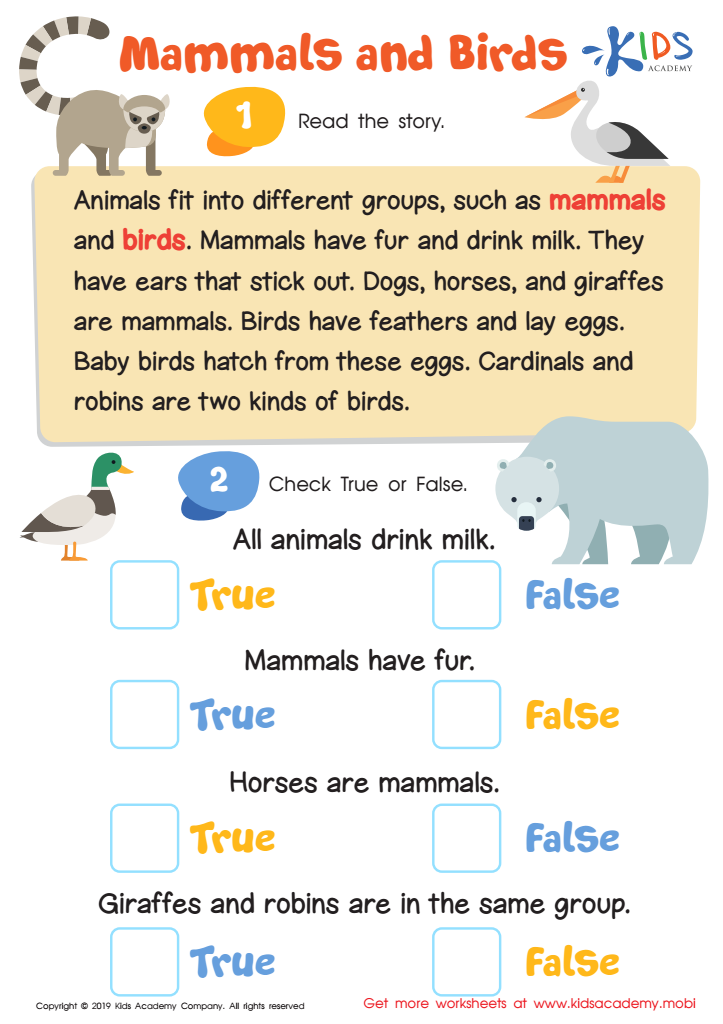

Mammals and Birds Worksheet
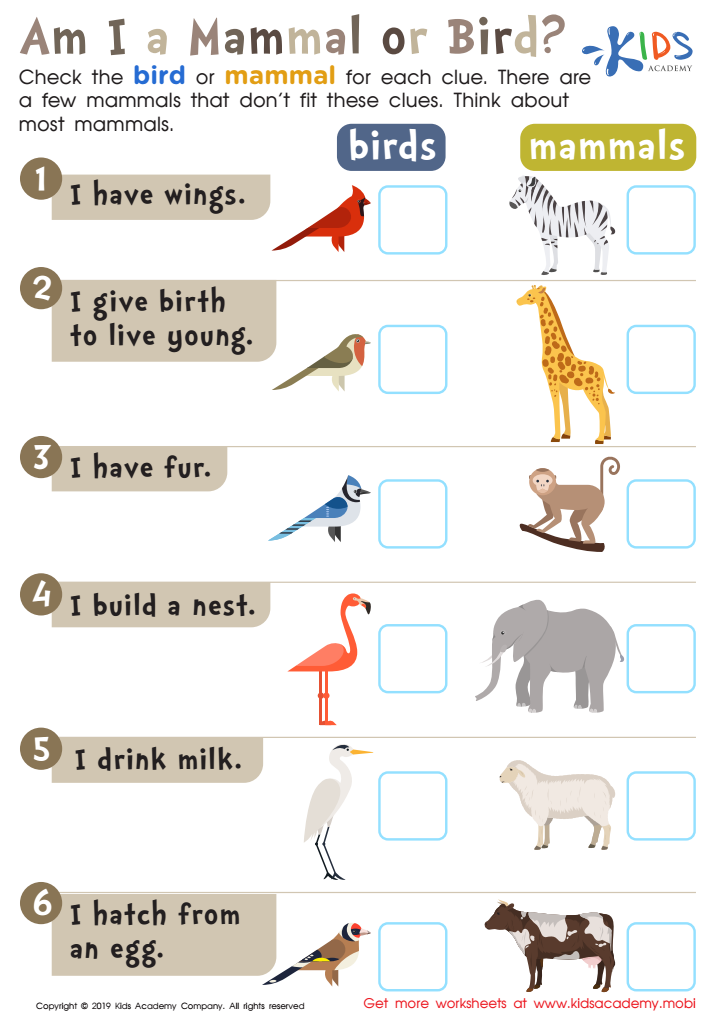

Am I a Mammal or Bird? Worksheet
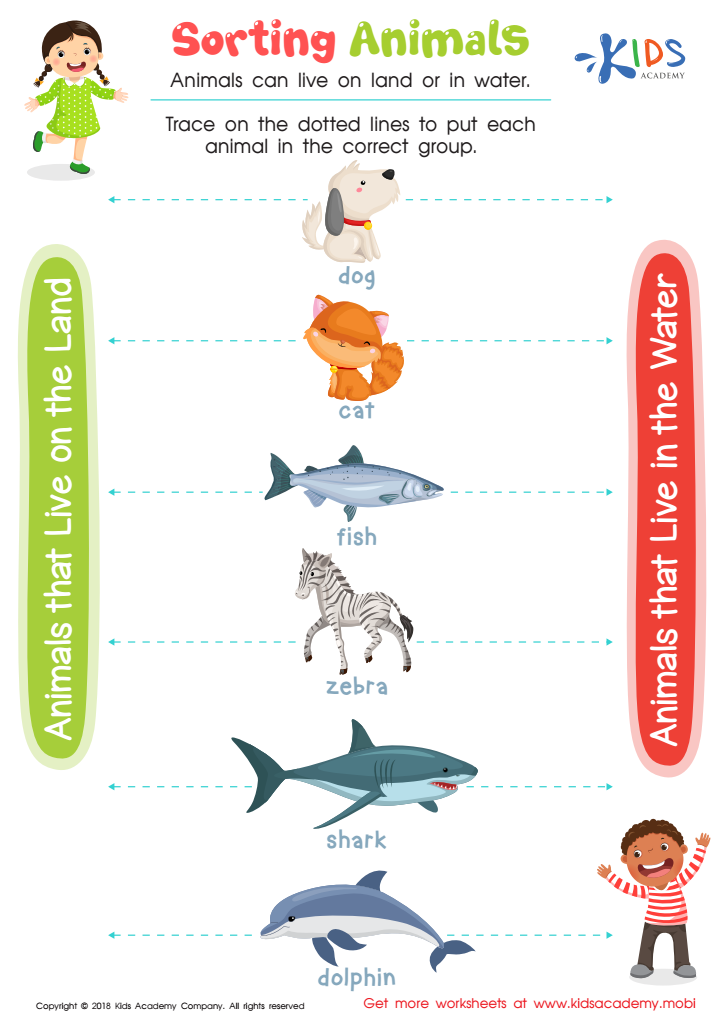

Sorting Animals Worksheet
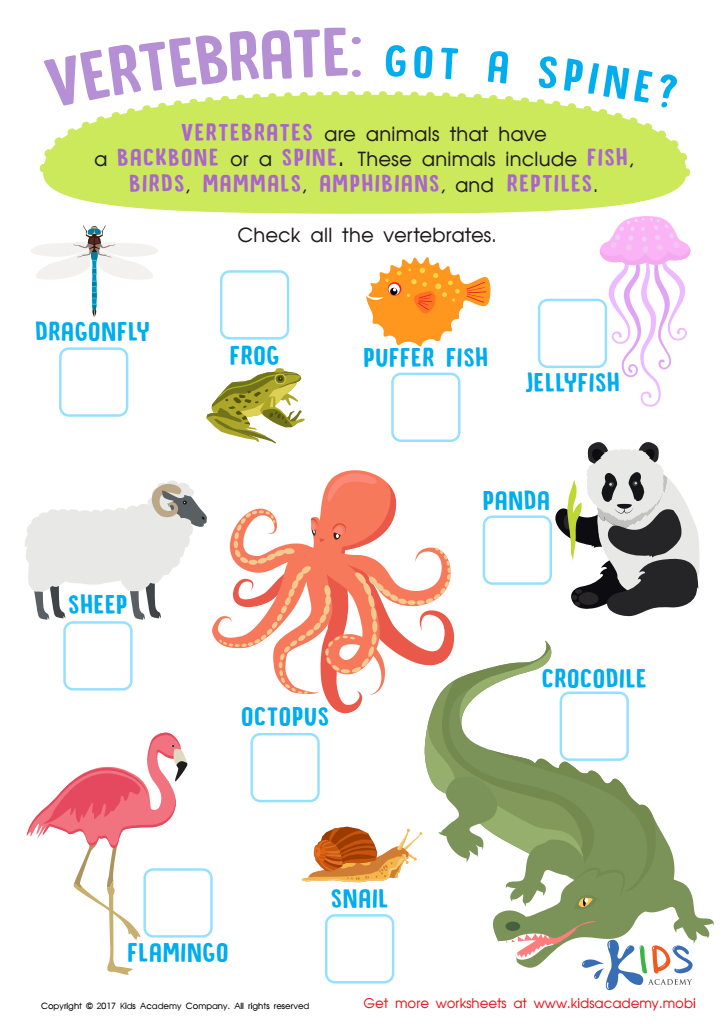

Vertebrates Animals Worksheet for 3rd Grade
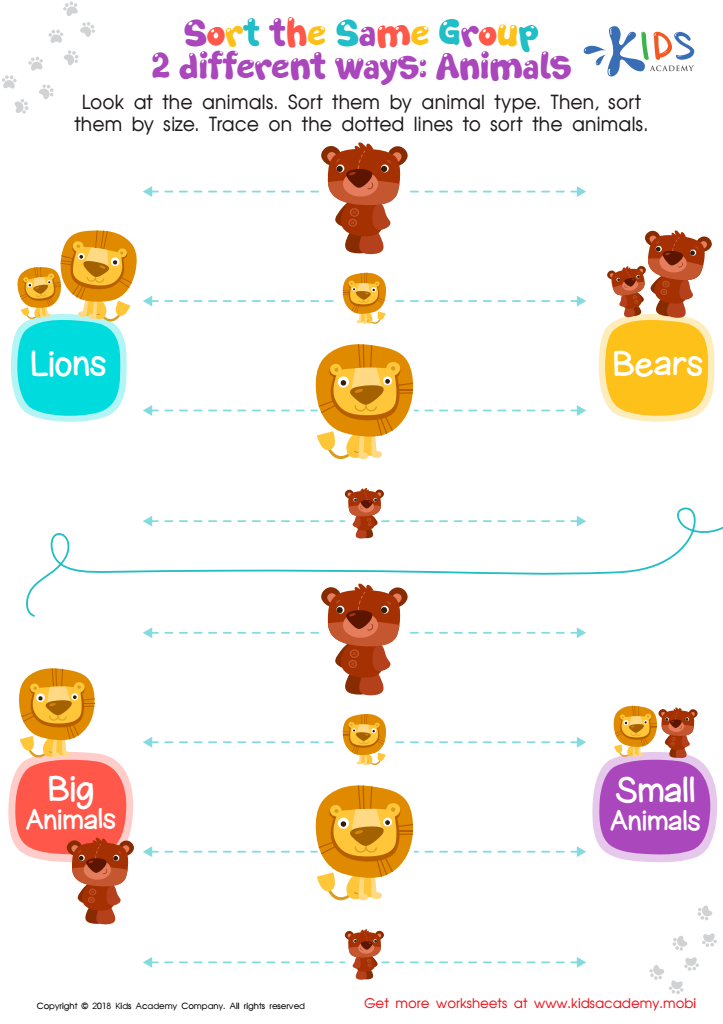

Sort the Same Group 2 Different Ways: Animals Worksheet
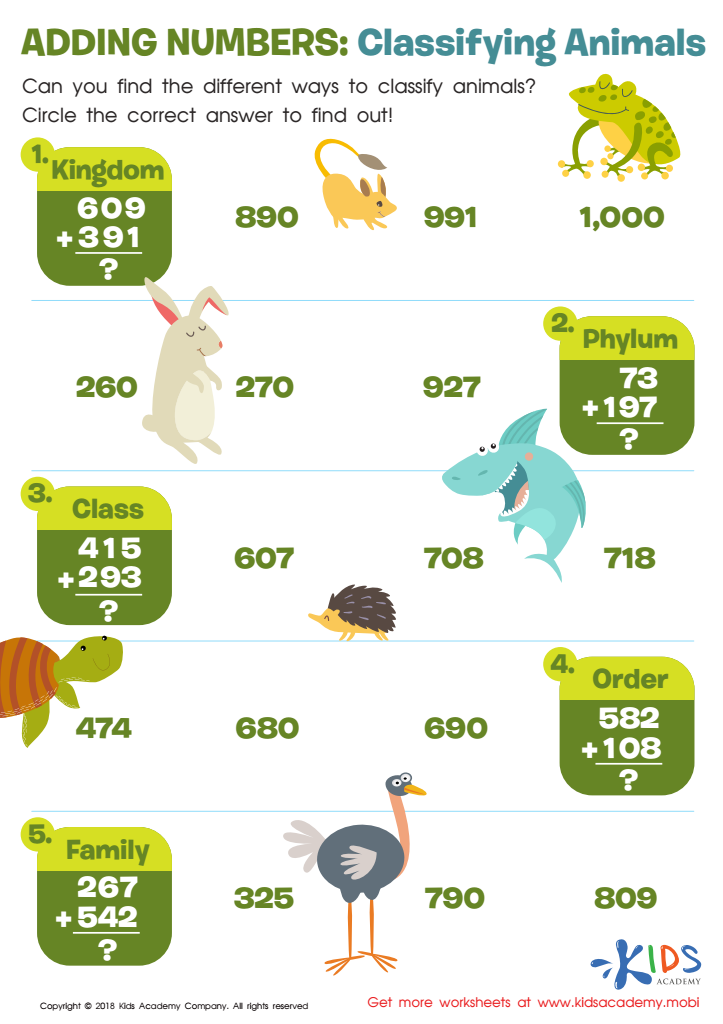

Adding Numbers: Classifying Animals Worksheet
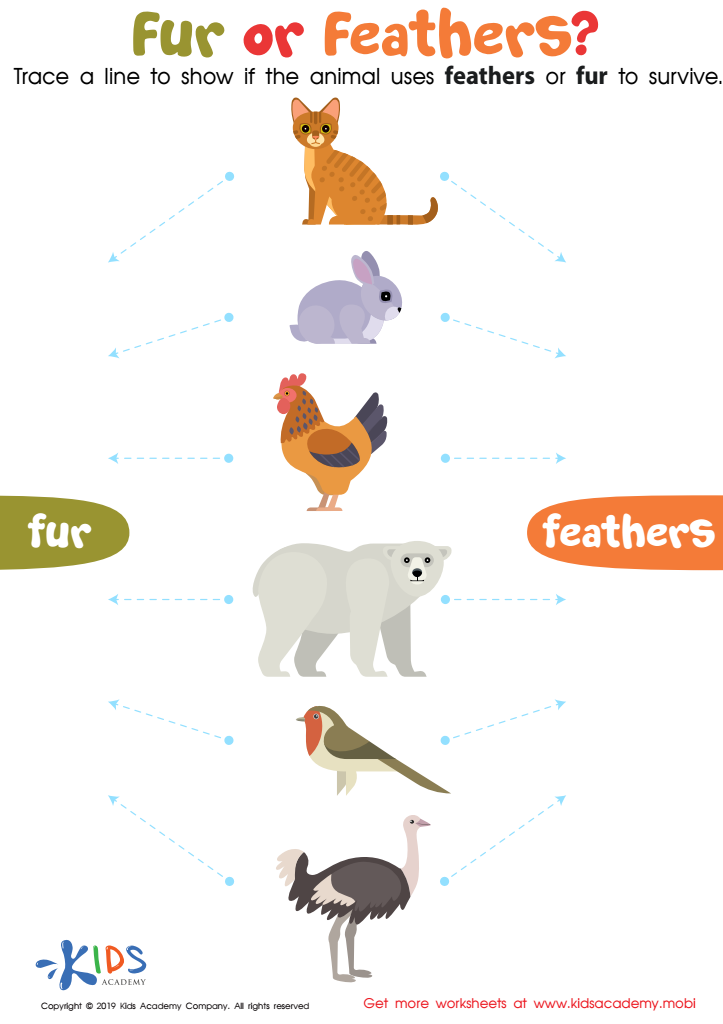

Fur or Feathers? Worksheet
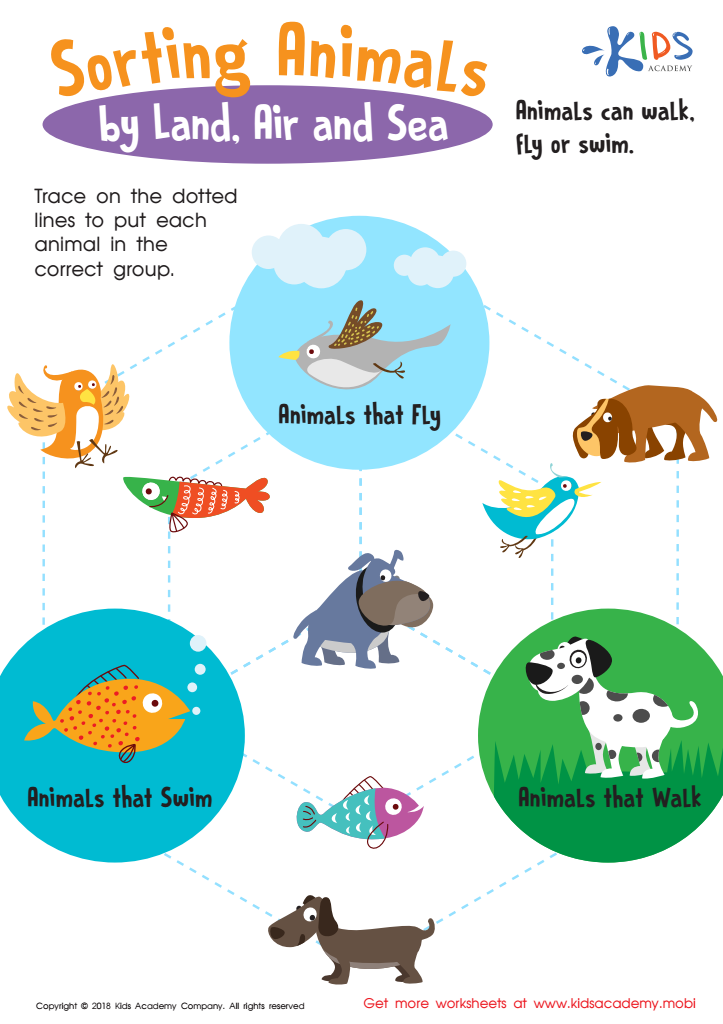

Sorting Animals by Land, Air and Sea Worksheet
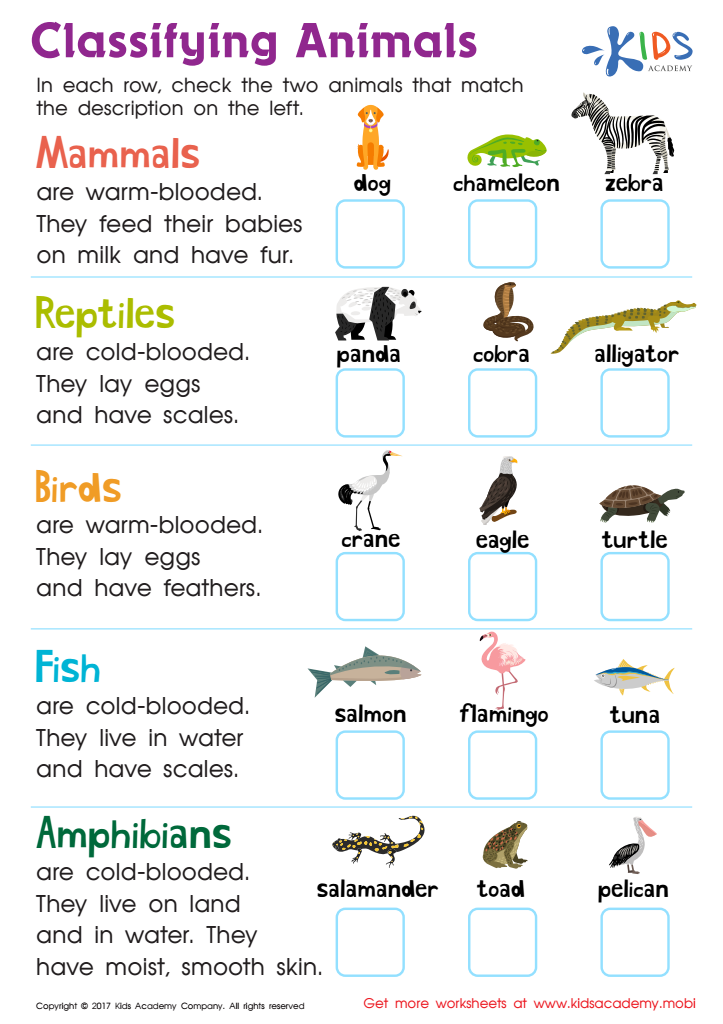

Classifying Animals Worksheet
Question/Answer
What does the Animal Classification skill mean when it comes to Kindergarten Plants and Animals learning?
The Animal Classification skill in the context of Kindergarten Plants and Animals learning refers to the ability of children to identify and group animals based on common characteristics or attributes. This foundational skill helps young learners understand biodiversity and recognize patterns in the natural world, such as distinguishing between mammals, birds, fish, reptiles, and insects.
What are some effective activities to train students’ Animal Classification skill when teaching them about Plants and Animals?
Effective activities for training students' Animal Classification skill include interactive sorting games (using pictures or physical models), creating classification charts or diagrams, engaging in outdoor scavenger hunts for local wildlife, and utilizing digital apps or online quizzes focused on distinguishing animal groups. Hands-on activities, like dissecting owl pellets to identify prey species, also enhance understanding and engagement.
How to test a Kindergarten student’s Animal Classification skills?
To test a Kindergarten student's Animal Classification skills, provide them with a hands-on sorting activity. Use cards or toy animals and ask them to sort these into basic groups such as mammals, birds, fish, reptiles, and amphibians. Observe their ability to distinguish characteristics that define each group, such as fur, feathers, scales, or the environment they live in.

 Assign to My Students
Assign to My Students







